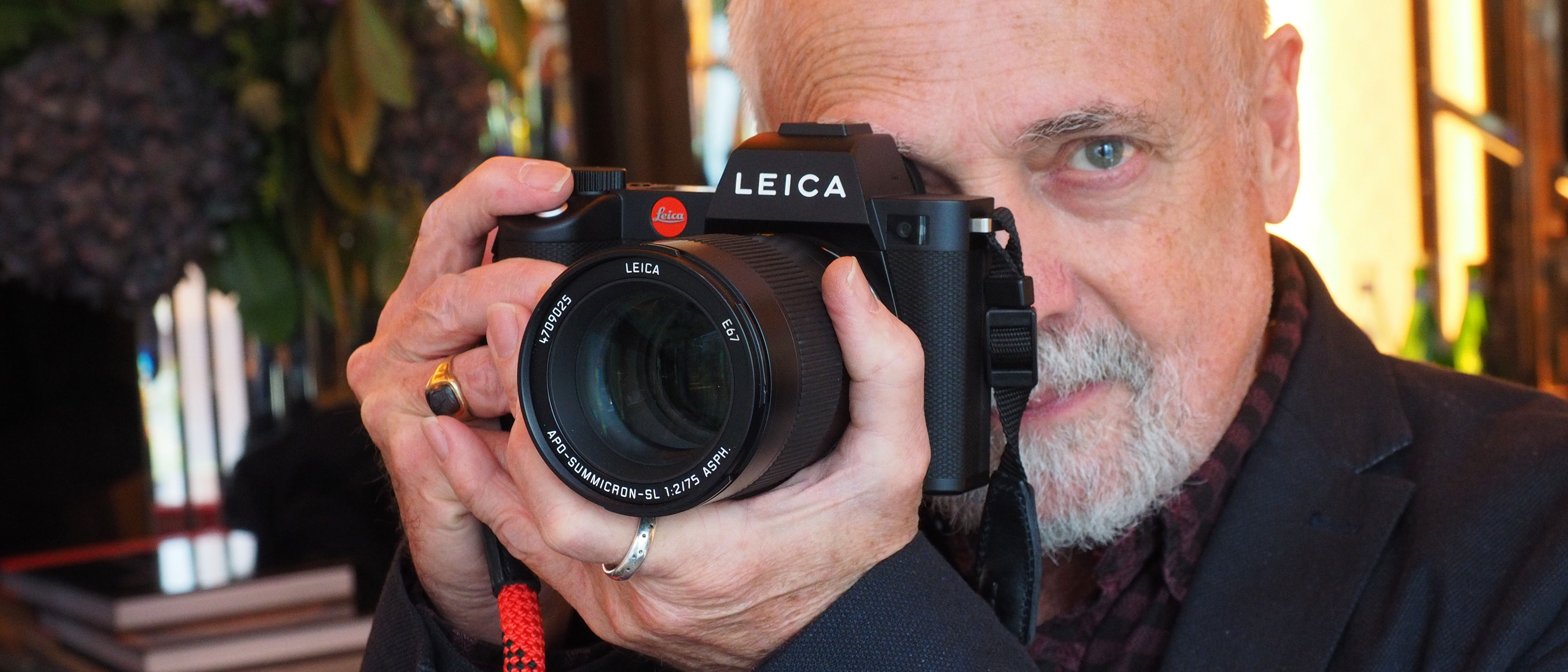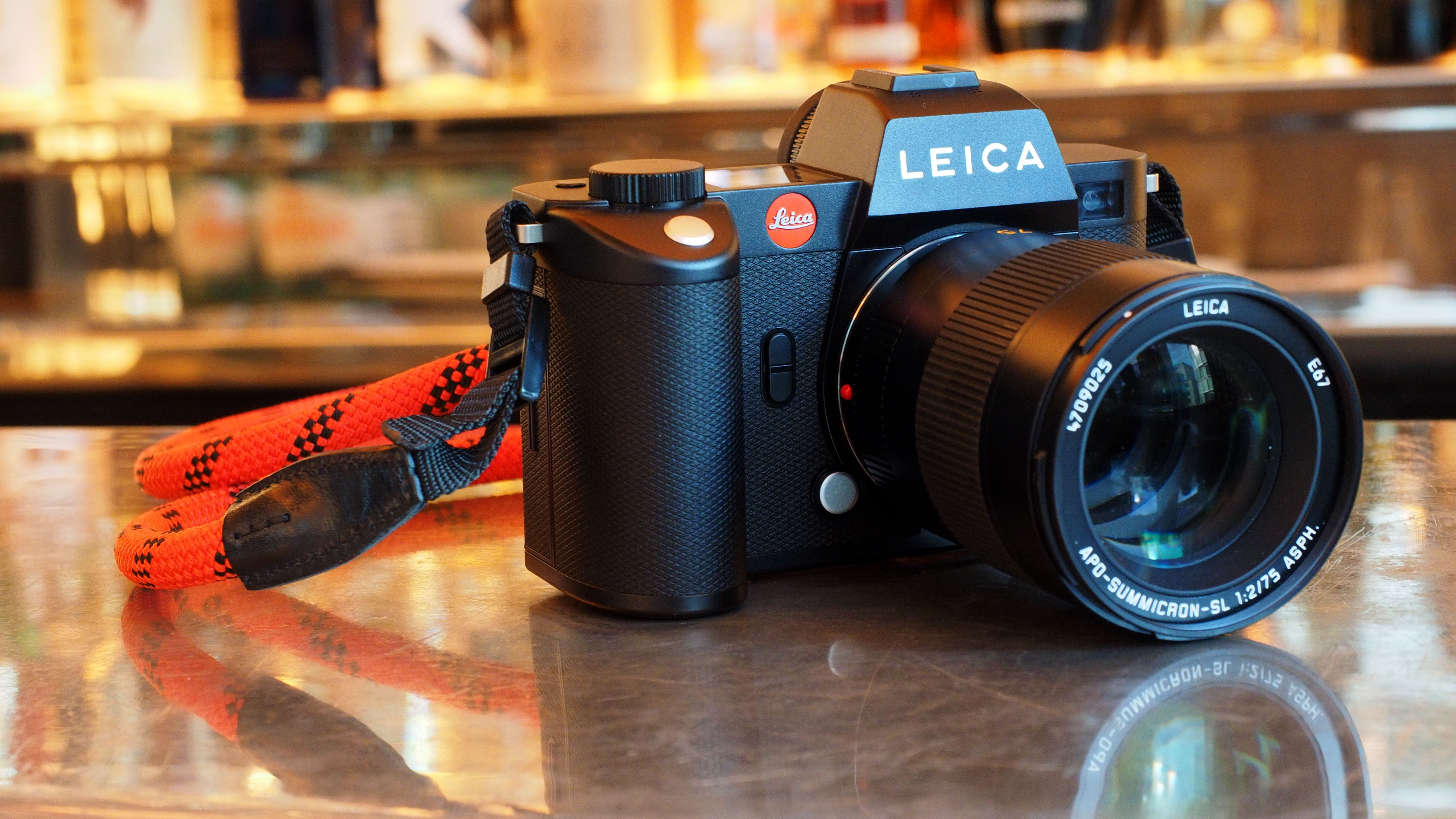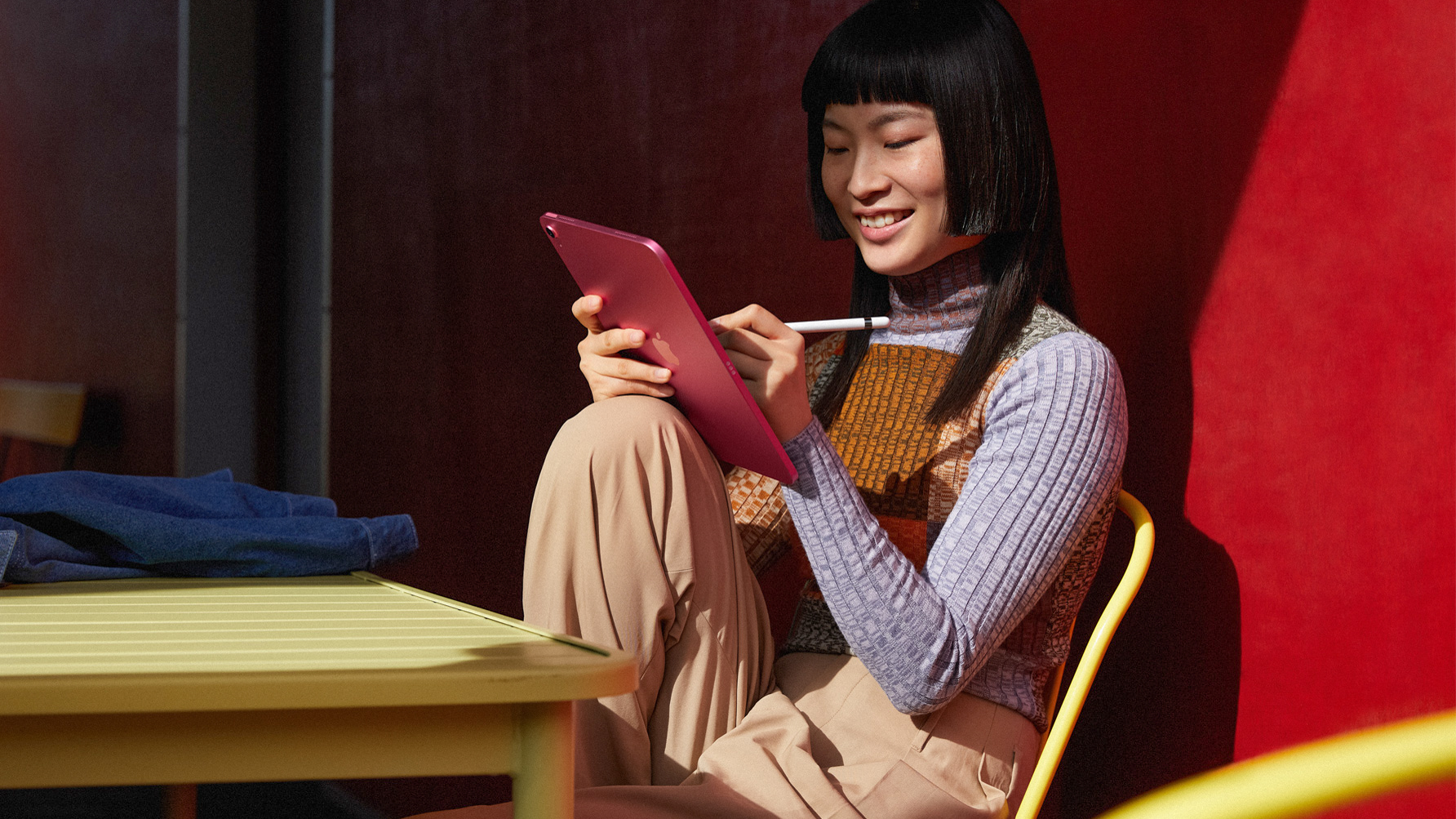Digital Camera World Verdict
It’s late to the party, it’s a lot like the Lumix S1R and it’s really expensive. But then when you see the Leica SL2, pick it up, handle it and use it, none of that matters. True, the Leica SL2 will always be a niche camera sold in small numbers to connoisseurs and a certain type of discerning pro, but this is no overpriced toy for rich folk. It incorporates a level of design and thought that is actually rather inspiring.
Pros
- +
Excellent resolution
- +
4K video at 60/50p
- +
Superb interface design
- +
10/20fps continuous shooting
Cons
- -
Fixed non-tilting rear touchscreen
- -
Price, obviously
- -
AF sluggish in low light
Why you can trust Digital Camera World
The Leica SL2 is the replacement for Leica's full frame mirrorless camera, the Leica SL. We imagine that Sony was once the only full frame mirrorless camera maker until Canon, Nikon and Panasonic joined in, but the prestigious but pricey 24-megapixel Leica SL, launched in 2015, was there right at the start of the mirrorless revolution.
But the Leica SL was expensive, technically limited and nowhere near a mainstream rival for Sony's cameras. The Leica SL2, however, is a very different proposition. It’s been a busy couple of years for full frame mirrorless cameras, and the SL2 is the last to arrive at the party, but it makes quite an entrance.
It’s like a glamorous soirée, where the most stylish guest is the last to arrive and makes the most sophisticated entrance. The Leica SL 2 is never going to be one of the masses, it will always hold itself apart from the rest, and it will always draw envious glances (or glowers) from the crowd when it finally arrives.
It immediately qualifies as one of the best Leica cameras available today, and while its price and its exclusive appeal make it hard to recommend as one of the best mirrorless cameras for general use, for those prepared to pay the extra, it delivers much more than just a fancy red dot.
• Best L-mount lenses • Best Leica SL lenses

Specifications
Sensor: 47MP full frame CMOS sensor
Image processor: Maestro III
AF points: 225-area contrast AF with depth mapping
ISO range: 100 to 50,000
Max image size: 8,368 x 5,584
Metering modes: Multi-field, centre-weighted, spot
Video: 5K at 30/24/24p, C4K & UHD at 60/50/30/25/24p
Viewfinder: EVF, 5.76m dots
Memory card: 2x SD/SDHC/SDXC (UHS II)
LCD: 3.2-inch fixed touchscreen, 2.1m dots
Max burst: 10fps mechanical shutter, 20fps electronic shutter, 100+ JPEG, 78 DNG
Connectivity: Wi-Fi, Bluetooth
Size: 146 x 107 x 42mm
Weight: 835g (body only, without battery)
Key features
Leica and Panasonic are technology partners, and you don’t have to look to deeply into the SL2’s specifications to see its technical similarity to the Panasonic Lumix S1R.
The best camera deals, reviews, product advice, and unmissable photography news, direct to your inbox!
The Leica SL2 has a 47-megapixel full frame CMOS sensor, for a start, with 5-axis in-body stabilisation that offers a quoted 5.5EV shutter speed advantage. Like the S1R, the SL2 can capture 4K video at up to 60/50fps, and the SL2 uses a 225 zone contrast AF system as the Lumix S1R, with ‘depth mapping’ operating at a frequency of 480fps.
Leica’s autofocus options are interesting. They include body detection as well as face detection, and the camera has easily accessed autofocus ‘case settings’, each with adjustable parameters, for different kinds of moving subject.
It also has an impressive turn of speed, offering 10fps continuous shooting with its mechanical shutter and 20fps with its electronic shutter. There's been a process of improvement and simplification too. Leica says it's removed a glass filter layer from in front of the sensor (we were told this is the low pass filter, done to maximise resolution) and that plastic viewfinder components have been replaced with glass for a better user experience.
Build and handling
The internal similarities between the Leica SL2 and Panasonic S1R might be obvious, but as a physical device it’s utterly different. This is NOT just a rebadging exercise, but an entirely different camera that just happens to share some internal components.
The first and most obvious characteristic of the SL2 is its sleek, minimal design. How can a camera this sophisticated have so few external controls, and can a couple of unmarked dials and six custom function buttons (five of which are unmarked) really offer the kind of clarity and efficiency that photographers will look for?
Actually… yes. We'd need Leica to let us keep the SL2 for a few months to properly assess its handling and interface design (nice try, huh?), but since that's probably not going to happen, we will give our impressions so far. The fact is, the SL2’s control system and the thought that has gone into it are remarkable.
For a camera that does so much, there don't seem to be anywhere near enough buttons and dials. On the top there are just two buttons, a dial, a status panel and a shutter release – and none of them are marked.
There’s no mode dial. Instead, you click the rear dial to activate a mode display on the status screen then turn the dial to change the mode. So you don’t need a mode dial.
The twin dial layout works intuitively in each of the PASM exposure modes, with the rear dial controlling aperture or shutter speed and the front dial used for exposure compensation – or, in M mode, one dial is for the shutter speed, one for the lens aperture.
Round the back there's an unmarked joystick next to another unmarked button (for toggling the EVF/rear screen by default), a control dial, a power switch (which is marked, usefully) and alongside the rear screen are three buttons WITH LABELS. One is for Playback mode, one is a FN button and the third is for the Menu.
On the front of the camera are two further unmarked buttons, one above the other. These, and the other unmarked buttons on the top and back are all programmable, which may leave you with a sinking heart.
Isn’t programming all those unmarked function buttons going to be an utter pain in the neck? Normally we’d say yes, because on just about any other camera it mean lots of tiresome hunting through layers of menus to find the custom settings options.
Not here. When you press and hold a function button an on-screen display pops up to offer all the settings available for that button. It's that simple. It’s a real light-bulb moment that makes just puts a grin on your face the first time you use it.

The separate menus for still and video photography are another great detail, as are the very elegant yet clear graphics and typefaces used throughout. It’s a reminder that you’re not just paying for megapixels and metal in a camera like this, but the design care and expertise that’s gone into it too.
The on-screen interface doesn't just look good (very, very good), it's also very responsive to touch control. It doesn't just display shutter speeds, apertures, ISO and EV compensation settings, it lets you drag on-screen sliders to change them if you don't want the effort of turning a control dial. This becomes more important for video, where you can't make 'live' adjustments with physical controls and risk jogging the camera or making a noise.
Other ‘features’ might raise a few eyebrows. The rear touchscreen is big, bright and sharp, but it doesn’t even tilt, let alone flip forwards. This inevitably makes certain sorts of shot more difficult, but then there’s always the Leica FOTOS app for remote viewing and camera control in those situations.
Performance
Many of the Leica SL2's performance characteristics are the same as the Panasonic Lumix S1R's, especially with regard to the autofocus.
The autofocus system, for example, is fast and positive in good light but slows down under dimmer artificial lighting. This is especially noticeable when shooting video with continuous AF enabled. The SL2 is not ideally equipped for run and gun vlogging, partly because of its size and weight, but also because its focus acquisition and transitions can get pretty leisurely in low light.
But it can also fool you. Its focusing is so quiet, smooth and unobtrusive that you imagine it's done nothing when actually it has. The Leica lenses we tried, including 75mm and 35mm primes and the Summilux-SL 50mm f/1.4, focus so quickly and quietly that focus is often achieved before you actually realise it.
The image quality is as good as you would expect from a camera and lenses that cost as much as this. The lab tests reveal that the SL2 offers very similar resolution, dynamic range and noise levels to other full frame mirrorless cameras in this class. We tested the Summilux-SL 50mm f/1.4 and found that to be close in resolution and optical performance to comparable premium prime lenses (if more expensive). There may be times when you can see differences in the way Leica lenses 'render' or 'draw' their subjects that you can't measure with lab charts, but there's no obvious performance gap between these lenses and any other top maker's top lenses. It's like one lens's bokeh versus another's – some photographers are much more sensitive to these differences than others.


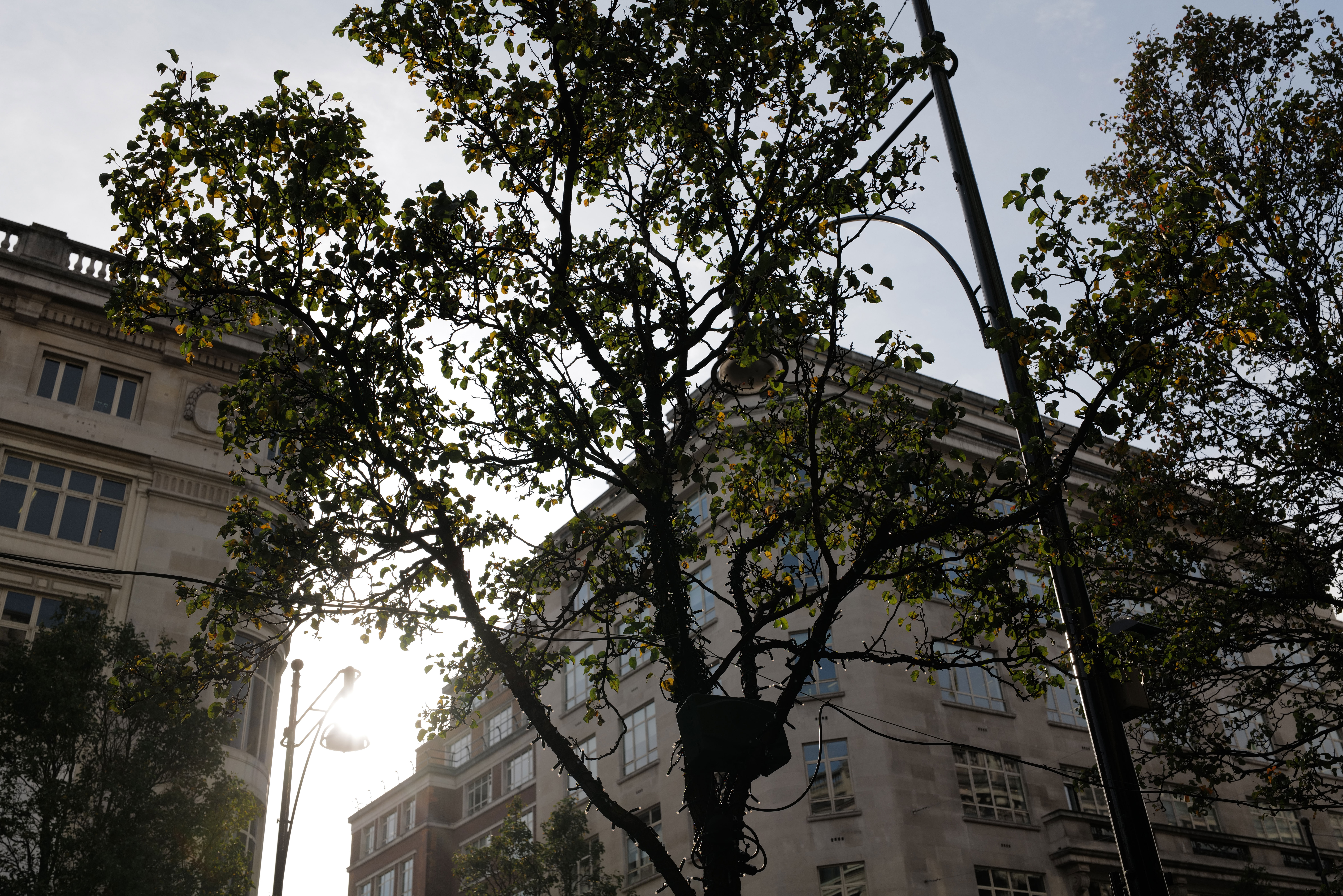


The image quality is pretty spellbinding. The resolution is as stellar as you might expect, thanks to the combination of a 47 megapixel full frame sensor and SL lenses which Leica says are the best it’s ever made.
Leica is especially proud of its image processing, and the SL2’s dynamic range, and while many sample images looked no different to those that might have been taken on any camera, there were a couple that were shot into the light against a bright sky that showed a lot more sky and shadow detail than might have been expected.
While the Leica SL2's internal hardware may have a lot in common with the Panasonic Lumix S1R, the Maestro image processor is Leica's own, and it's the processor that gives cameras their characteristic image rendering.

Lab data
We compared the Leica SL2's lab results with those from three rival cameras in a similar price bracket and market sector: the Sony A7R Mark IV, the Nikon Z 7 and medium format Fujifilm GFX 50R.
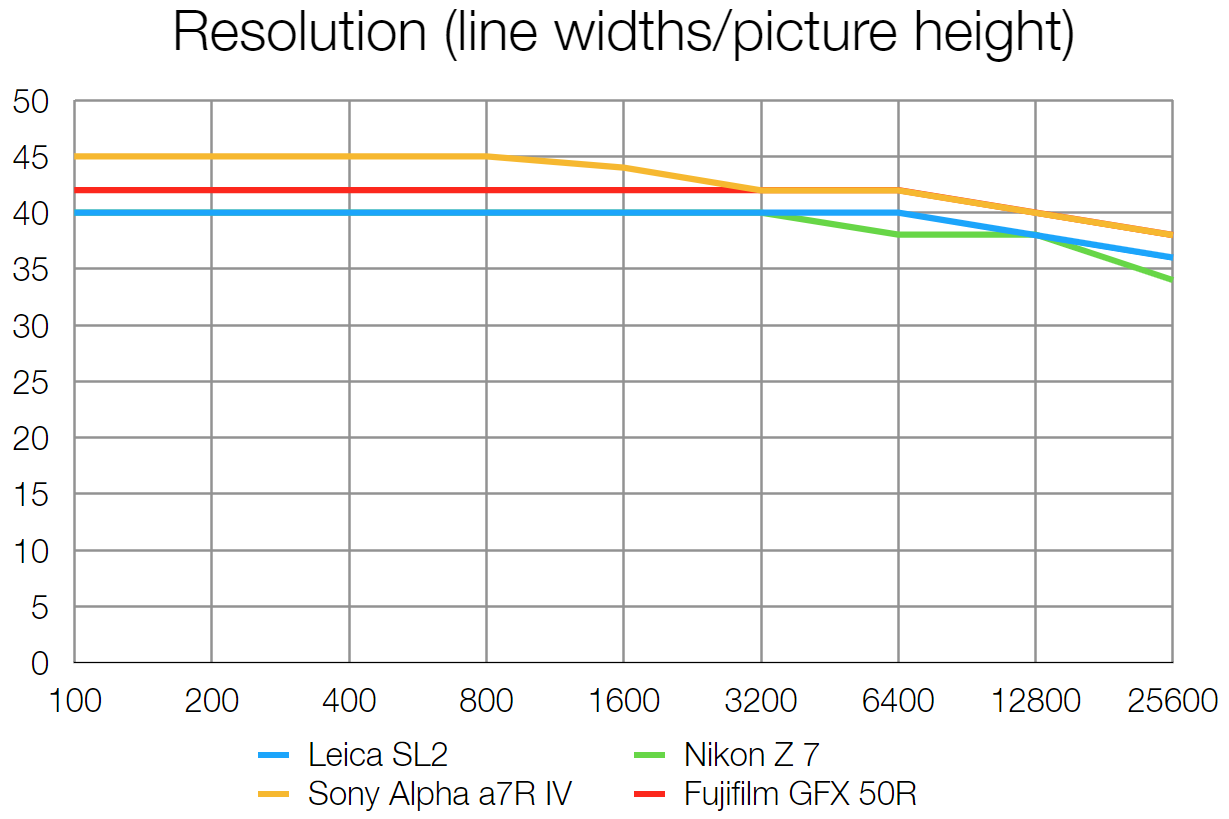
Though the SL2's 47.3MP sensor resolution beats the Nikon Z 7's 45.7MP output on paper, both cameras resolve almost identical amounts of fine detail in our lab tests. Predictably the 51.4MP Fujifilm GFX 50R and 61.2MP Sony a7R IV are out in front.

Our signal to noise test measures image clarity, specifically the ratio of the actual image 'data' you want to capture, versus the image noise that you don't want, but will inevitably be visible when shooting at higher ISO sensitivities. The higher the score at a given ISO sensitivity, the better.
The Leica SL2 performs almost identically to the Nikon Z 7 from ISO 100 right through to ISO 25,600. However, the Fujifilm's larger medium format sensor size combined with only a modest increase in pixel count helps it produce less noise and therefore clearer images across the sensitivity range.
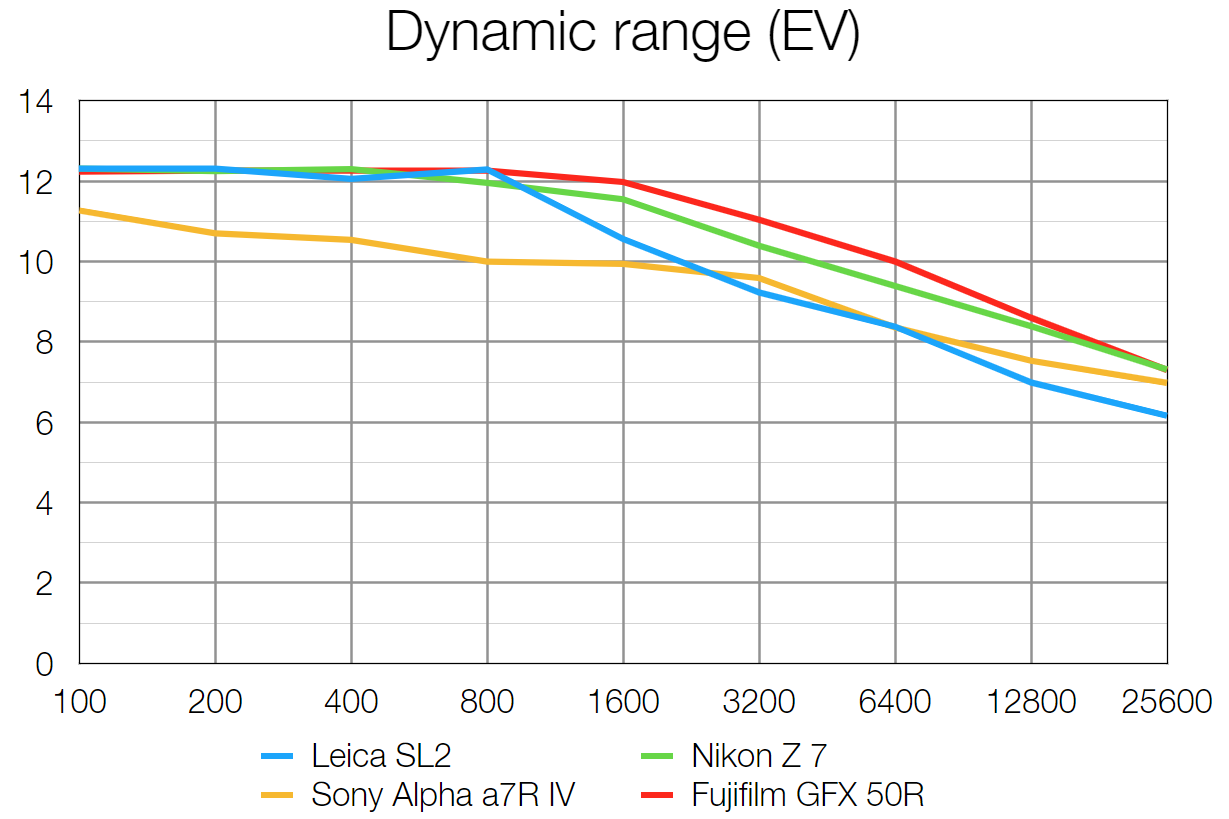
At lower sensitivities the SL2 ties with the Z 7 and even manages to give the medium format GFX 50R a run for its money. However at ISO 1600 and beyond, dynamic range is noticeably more restricted than both the Fujifilm and more notably, the Z 7. At ISO 3200 and above, even the previously under-performing Sony A7R IV is capable of extra dynamic range over the Leica.
It is worth noting that, where possible, we always disable any in-camera dynamic range enhancement in order to preserve a level playing field when testing.
Verdict
The Leica SL2 is bound to provoke some controversy, either through its relatively late arrival on the full frame mirrorless camera scene, its technical similarity to the Lumix S1R or its price. Let's take those points in turn.
First, it’s better late than never. Second, the Lumix S1R is an excellent camera, and if the SL2 shares much of its technology, we shouldn’t complain about it! Third, Leicas have never been built to meet a price point and nobody’s being forced to buy one.
So is the Leica SL2 worth it? If all you want is specifications, features and performance, we’d say not (get the Lumix S1R instead). But the SL2 adds a layer of build quality, design finesse and usability that adds considerably to its value.
Three things stand in the way of this camera getting a five-star review. The price is one factor, but not the most important. The fixed rear screen and contrast AF system are another. The size, weight (and cost) of the Leica SL lenses is troubling too. Leica says they are the best they've ever made, which is fine, but do they have to be so big? If your idea of Leica lenses is those beautiful little M-series primes that fit on its rangefinder cameras, then get ready for a shock.
Of course, you can now use any L-mount lens from Panasonic and Sigma, but while they are a lot cheaper, they are just as big – and would you really buy a Leica and then use Sigma or Panasonic lenses?
The main issue for most of us is that the Leica SL2 is way too expensive, but there are well-heeled amateurs and discerning pros who will think differently. Its performance is excellent, as you'd expect, but its design and interface are practically in a class of their own. It's stripped down yet efficient, minimal but effective. It takes things that other cameras make difficult and makes them simple. The Leica SL2 is expensive, but you're getting far more than the specifications alone suggest.
Read more:
• These are the best Leica cameras today
• We pick the best mirrorless cameras on the market
• The best cameras for professionals

Rod is an independent photography journalist and editor, and a long-standing Digital Camera World contributor, having previously worked as DCW's Group Reviews editor. Before that he has been technique editor on N-Photo, Head of Testing for the photography division and Camera Channel editor on TechRadar, as well as contributing to many other publications. He has been writing about photography technique, photo editing and digital cameras since they first appeared, and before that began his career writing about film photography. He has used and reviewed practically every interchangeable lens camera launched in the past 20 years, from entry-level DSLRs to medium format cameras, together with lenses, tripods, gimbals, light meters, camera bags and more. Rod has his own camera gear blog at fotovolo.com but also writes about photo-editing applications and techniques at lifeafterphotoshop.com
